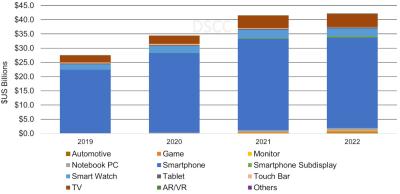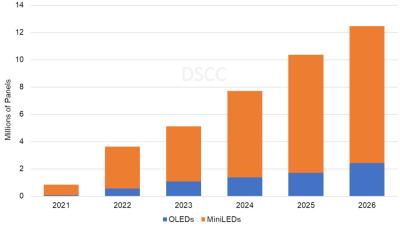OLED displays are made from organic emitter materials - and are gaining in popularity as these next-generation displays offer excellent image quality and novel form factors.
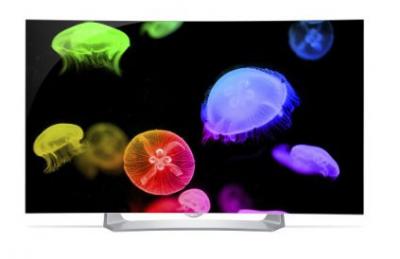
Quantum Dots are tiny particles that have excellent photonic emission properties - and are used widely today in many LCD displays as the QD photoluminescence features enable the conversion of blue LED light to red and green light to create full-color displays that are better than white-backlit LCDs. QD particles can also be used to create emissive displays, in which the QDs themselves emit the light - read more about QD displays here.
QD-OLED - hybrid OLED and QD displays
QD-OLED displays are hybrid displays that use a combinattion of OLED emitters with QD color conversion layers and/or QD emitters.
Samsung QD-OLED
Samsung's QD Displays use blue OLED emitters and quantum-dots that convert the blue light to red and green light. Samsung's so-called QD-OLED displays have been in development for many years. Samsung Display aims to start QD-OLED panel production towards the end of 2021, and Samsung Electronics will reportedly launch the first QD-OLED products in early 2022.
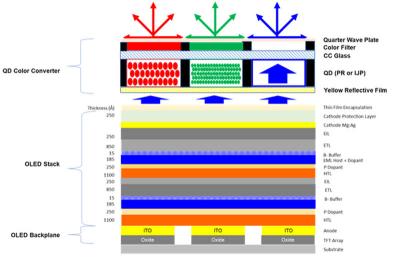
In its first-gen QD-OLED display, Samsung is using a fluorescent blue emitter (will hopefully change to a higher efficiency one in later generations) and ink-jet printed QDs.
TCL H-QLED
In March 2019 it was unveiled that China-based display maker TCL is developing a new hybrid display technology that uses a blue OLED emitter coupled with red and green QD emitters. All three emitter materials will be combined and printed using ink-jet printing technology. TCL calls this technology H-QLED and this could prove to be the technology of choice for TCL's future high-end emissive TV displays. For more information on TCL's H-QLED, click here.
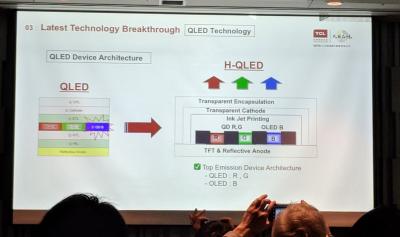
The latest QD OLED news:
QD-OLED TV teardown shows Samsung's sub-pixel structure
NanoPalomaki posted an interesting teardown of Samsung's S95B QD-OLED TV.
This is an interesting video to watch, during which you can see the sub-pixel structure of the TV. This is only the first part of the teardown, we'll see what is revealed in the second part.
Samsung reports its financial results for Q2 2022, with excellent earnings from SDC, confirms it is developing microdisplay technologies
Samsung Electronics reported its financial results for Q2 2022, with record second-quarter revenues of 77.2 trillion Won ($59 billion USD).
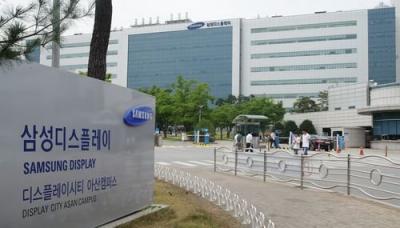
Samsung Display reported record second-quarter revenue and operating profit for mobile displays driven by solid demand from major customers. Samsung specifically mentions the growth in its laptop OLED business. Performance in the large panel business was weaker due to initial ramp-up costs of Samsung's QD-OLED displays, and a decline in LCD prices.
DSCC: the OLED market will grow 2% in 2022, led by strong demand for IT panels
DSCC estimates that the OLED market will increase 2% in 2022, to reach $42 billion. Revenues for smartphones, the leading OLED application, will actually decline by 4%, but this will be offset by increases in other applications.
In fact, some applications will experience very fast growth: OLED monitors (641% unit growth, 279% revenue growth), OLED laptops (64% units, 39% revenue) and automotive displays (73% units, 68% revenue).
Kateeva did not yet receive any QD-OLED inkjet printers orders from SDC, and may lose its patent portfolio to its latest investor
In 2020 Kateeva lost Samsung's QD-OLED inkjet printing inkjet printing contact to Korea's Semes, which resulted in massive layoffs including some of Kateeva's executives.
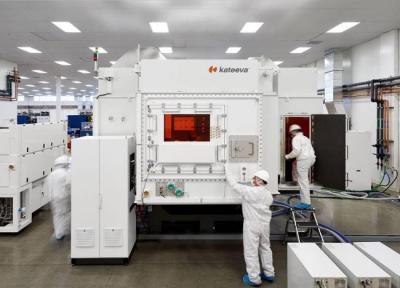
In January 2022 it was reported that Samsung has decided to change course, and rely on Kateeva's inkjet printers in its 2nd QD-OLED production line, as the Semes printers do not perform as well as Samsung hoped.
DSCC sees 2.4 million OLED monitor panels shipping in 2026, up from 600,000 in 2022
DSCC says that it expects the advanced monitor category to grow 328% in 2022, to reach 3.6 million panels. OLED monitor shipments will jump 641%, to reach 600,000 units. The growth in OLED shipments will continue, but even in 2026, OLEDs will still take a small part of the market segmented, which is dominated by mini-LED LCDs.
In 2022, DSCC sees QD-OLED panels to grab a 27% market share, while WOLEDs have a lead with a 52% market share. In total, OLEDs will have a 15% market share of the advanced monitor market.
Samsung Display to stop making LCD display panels next month
According to reports from Korea, Samsung Display has decided to shut down all of its remaining LCD production line next month (June 2022).

SDC has actually made the decision to quit the LCD market back in 2020, but this decision was reversed as demand for LCD displays increased following the COVID pandemic. In recent months the price of LCD panels have dropped sharply to an all time low.
LG Display could adopt a microLens array in its OLED TV panels to boost brightness and efficiency
Reports from Korea suggest that LG Display is looking into adopting a microLens array in its large OLED TV panel architecture. The microlens layer could boost brightness by up to 20%, which will also increase efficiency (if brightness is kept as before).
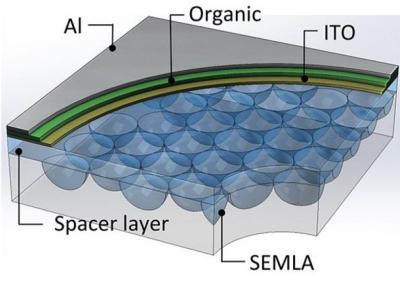
MicroLens array structure, University of Michigan
According to the report, the project is at an advanced stage, and panels with the microLens array could be introduced by the end of this year. LGD will apply the technology to its OLED.EX panels, so brightness could reach up to 1,200 nits. LGD considers this technology as it faces competition in large-area OLED production, from Samsung's QD-OLED panels, for the first time.
Samsung Display's managed to increase its QD-OLED production yield to 75%
Samsung Display recently started producing QD-OLED panels (for TV and monitor applications), and according to earlier reports, the production suffered from low yields, estimated at around 30-50% a few months ago.
In a move that is thought to reassure SDC's employees, the company announced on its internal bulletin board that it has managed to increase its QD-OLED production yields to 75%, and it now aims to increase that to 90% or higher.
Samsung aims to reduce the thickness of its future QD-OLED panels by removing the QD glass substrate
According to reports in Korean media, Samsung is developing a new process which will allow it to reduce the thickness of its QD-OLED panels.
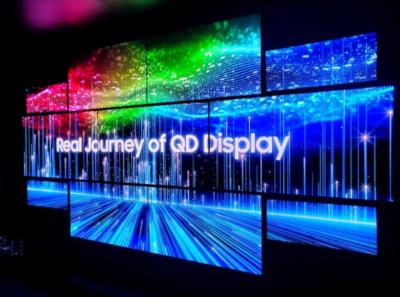
The current QD-OLED design uses two glass substrates, one for the TFT backplen (and the OLED frontplane materials), and one for the QD conversion layer. The new plan is to remove the QD glass substrate, and inkjet print the QDs directly on the OLED TFE encapsulation layer.
Do Samsung's new QD-OLED panels suffer from color inaccuracies?
Products with Samsung's QD-OLED panels are now hitting the market, led by Dell's Alienware AW3423DW gaming. A German magazine reviewed the 34" monitor, and discovered an issue with color inaccuracies.
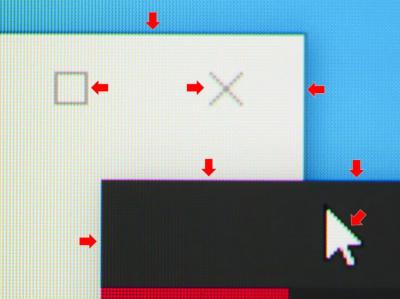
As you can see in the photo, when there's a change from a dark color to a bright color, the display shows green lines that should not be there.
Pagination
- Previous page
- Page 4
- Next page


